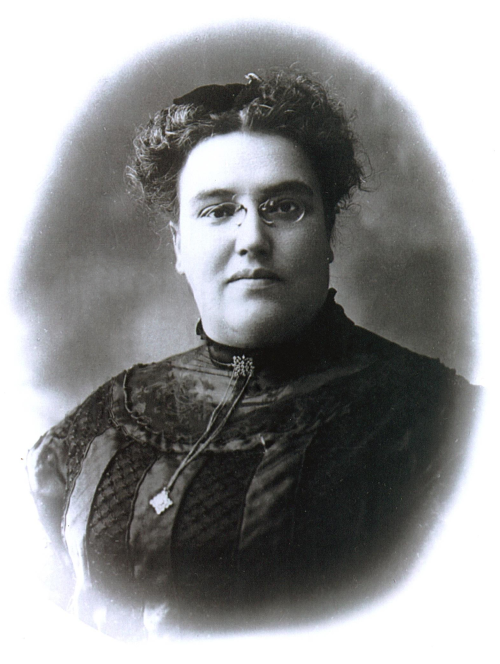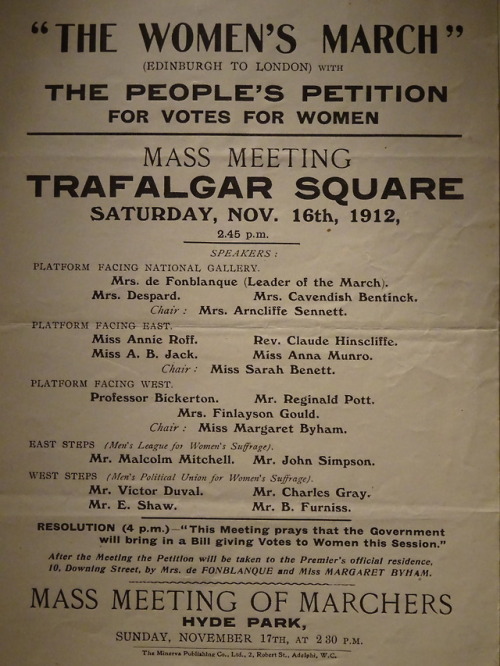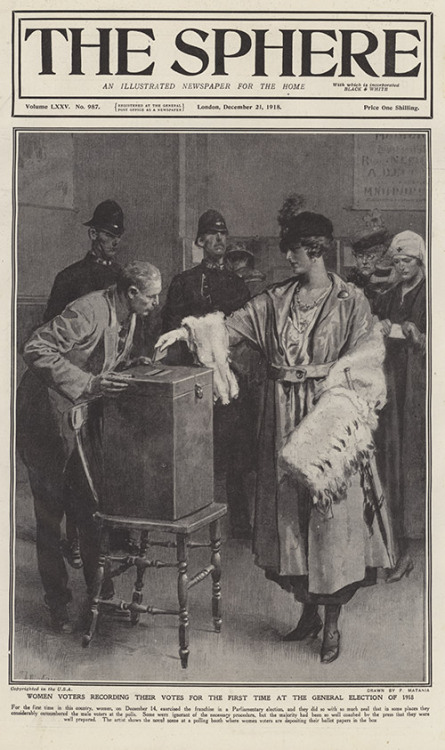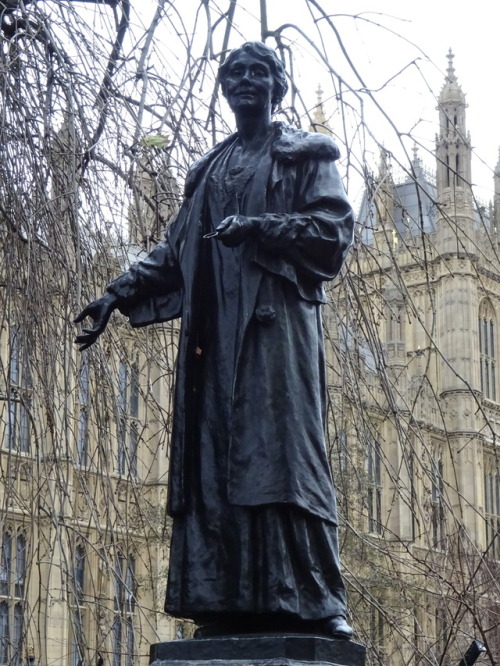#suffrage movement

Suffragette chained to a railing
Source: LSE Women’s Library
Do you have your calendar ready for the new year? If it was 1918, you could have this Susan B. Anthony calendar filled with rousing quotes from the suffragist.
Issued less than two years before the ratification of the 19th amendment, the page for January 1918 tells American women that “the hour for political action has come.”
This calendar (along with several other suffragist and women’s rights calendars) is part of the Adelaide Johnson papers in the Lisa Unger Baskin collection.
Post link
“DONNE | Women in Music | ETHEL SMYTH (1858 - 1944)”
“In prison, she conducted her fellow prisoners performing The March of the Women with a toothbrush through the cell window”
Portrait photograph of feminist activist Ana de Castro Osório (1872–1935) — Unknown photographer, 1913 (Museum of the Presidency of the Republic)
Post link
6th February 2018, 100 years since the Representation of the People Act extended the vote to some women over 30 in the UK
Illustration by F. Matania for The Sphere, 21st December 1918
Post link
“Agitate! agitate! Ought to be the motto of every reformer. Agitation is the opposite of stagnation—the one is life, the other, death.”
Ernestine Rose, nineteenth-century women’s rights activist, would certainly have marched this past weekend to protest Donald Trump’s inauguration, according to biographer and women’s historian Bonnie S. Anderson.
Post link
On March 3, 1913, protesters parted for the woman in white: dressed in a flowing cape and sitting astride a white horse, the activist Inez Milholland was hard to miss.
She was riding at the helm of the Women’s Suffrage Parade - the first mass protest for a woman’s right to vote on a national scale. After months of strategic planning and controversy, thousands of women gathered in Washington D.C. Here, they called for a constitutional amendment granting them the right to vote.

By 1913, women’s rights activists had been campaigning for decades. As a disenfranchised group, women had no voice in the laws that affected their – or anyone else’s – lives. However, they were struggling to secure broader support for political equality. They’d achieved no major victories since 1896, when Utah and Idaho enfranchised women. That brought the total number of states which recognized a women’s right to vote to four.

Alice Paul, inspired by the British suffragettes, proposed a massive pageant to whip up support and rejuvenate the movement. Washington authorities initially rejected her plan—and then tried to relegate the march to side streets. But Paul got those decisions overturned and confirmed a parade for the day before the presidential inauguration of Woodrow Wilson. This would maximize media coverage and grab the attention of the crowds who would be in town.
However, in planning the parade, Paul mainly focused on appealing to white women from all backgrounds, including those who were racist. She actively discouraged African American activists and organizations from participating - and stated that those who did so should march in the back.

But Black women would not be made invisible in a national movement they helped shape. On the day of the march, Ida B. Wells-Barnett, a ground-breaking investigative journalist and anti-lynching advocate, refused to move to the back and proudly marched under the Illinois banner. The co-founder of the NAACP, Mary Church Terrell, joined the parade with the 22 founders of the Delta Sigma Theta Sorority, an organization created by female students from Howard University. In these ways and more, Black women persevered despite deep hostility from white women in the movement, and at great political and physical risk.
On the day of the parade, suffragists assembled to create a powerful exhibition. The surging sections of the procession included international suffragists, artists, performers and business-owners. Floats came in the form of golden chariots; an enormous Liberty Bell; and a map of enfranchised countries. On the steps of the Treasury Building, performers acted out the historical achievements of women to a live orchestra.

The marchers carried on even as a mob blocked the route, hurling insults and spitting at women, tossing cigars and physically assaulting participants. The police did not intervene, and in the end, over 100 women were hospitalized.
Their mistreatment, widely reported throughout the country, catapulted the parade into the public eye—and garnered suffragists greater sympathy. National newspapers lambasted the police, and Congressional hearings investigated their actions during the parade. After the protest, the Women’s Journal declared, “Washington has been disgraced. Equal suffrage has scored a great victory.”
In this way, the march initiated a surge of support for women’s voting rights that endured in the coming years. Suffragists kept up steady pressure on their representatives, attended rallies, and petitioned the White House.
On August 18, 1920, Congress ratified the 19th amendment, finally granting women the right to vote.
Learn more about this historic moment by watching the TED-Ed Lesson The historic women’s suffrage march on Washington - Michelle Mehrtens
Animation by WOW-HOW Studio









